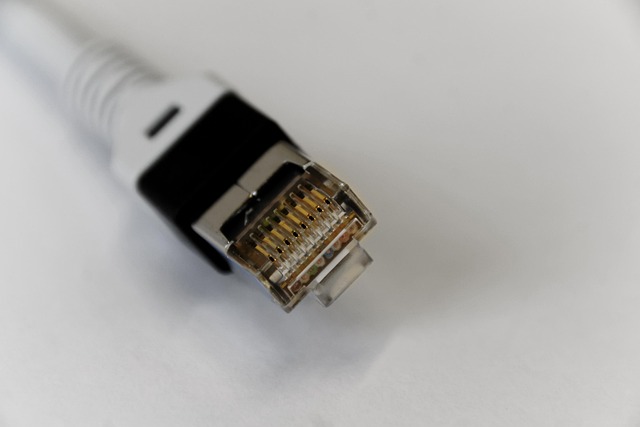Wireless access points (WAPs) are crucial for expansive network reach, eliminating the need for extensive cabling by serving as gateways between wireless and wired networks. They enhance connectivity in large or geographically dispersed locations, supporting high-speed data transfer, voice calls, and video streaming through advanced features. Structured IT infrastructure cabling offers substantial benefits, connecting more devices with minimal signal loss and future-proofing against growing data demands and emerging technologies. When designing IT infrastructure cabling for large areas, consider unique spatial challenges, plan for redundancy, select appropriate cabling types, and ensure scalability. Implementing WAP cabling requires strategic planning, consistent standards, secure connections, and regular maintenance to support evolving network demands.
Wireless access points (WAPs) are essential for providing network coverage across vast areas. As organizations seek to expand their digital reach, understanding the role of WAPs and implementing effective cabling solutions becomes crucial. This article explores the benefits of IT infrastructure cabling for extended wireless network coverage, delving into key considerations and best practices for successful deployment. From optimizing signal strength to ensuring robust connectivity, these strategies are vital for modern, large-scale networks.
Understanding Wireless Access Points and Their Role in Network Coverage
Wireless access points (WAPs) are crucial components in any IT infrastructure cabling system designed for extended network coverage. These devices serve as gateways, enabling wireless devices to connect to a wired network and vice versa. By strategically placing WAPs across a facility, organizations can significantly enhance their network reach, eliminating the need for cumbersome cabling throughout every corner of a building. This is particularly beneficial in large or geographically dispersed locations where traditional cabling becomes impractical and costly.
WAPs play a pivotal role in creating a seamless wireless network environment. They facilitate high-speed data transfer, voice calls, and video streaming by broadcasting and receiving signals through antennas. Advanced WAP technologies offer features like multiple frequency bands, beamforming, and intelligent load balancing, ensuring optimal performance and minimizing interference. This results in improved user experience for employees and visitors alike, who can seamlessly access the network from any location within the coverage area.
The Benefits of Implementing Cabling for Extended Reach
Implementing IT infrastructure cabling for extended network coverage offers significant advantages, especially in large or geographically diverse organizations. One of the key benefits is the ability to connect more devices and users to the network with minimal signal degradation. Traditional wireless solutions might struggle to maintain high-speed connectivity over long distances, but structured cabling ensures a stable and reliable connection.
This approach also provides future-proofing for an organization’s IT needs. Cabling allows for easier upgrades and expansions of network capabilities, accommodating the ever-growing demands of data transfer and ensuring that the network infrastructure remains robust and adaptable to new technologies.
Key Considerations for IT Infrastructure Cabling in Large Areas
When designing IT infrastructure cabling for large areas, several key considerations come into play. Firstly, understand the unique challenges and requirements of the space, such as coverage gaps or obstructions that might impede signal strength. This involves assessing the layout, identifying dead zones, and planning for adequate redundancy to ensure consistent network performance.
Another crucial aspect is selecting the right cabling types, including fiber optic or copper cables, based on data transmission needs and distance limitations. The choice should align with the desired speed, bandwidth, and reliability, especially in extended coverage scenarios. Additionally, consider the scalability of the infrastructure to accommodate future growth, ensuring that the cabling system can adapt without significant overhaul.
Best Practices for Installing and Maintaining Wireless Access Point Cabling Systems
When implementing wireless access point (WAP) cabling for extended network coverage, best practices should be followed to ensure optimal performance and reliability. Firstly, proper planning is key. Assess the IT infrastructure cabling needs of your organization, including the number of WAPs required and their placement. Consider factors such as building layout, interference sources, and user density to design a robust wireless network architecture.
During installation, it’s crucial to maintain consistent cable types and standards across the entire system. Use high-quality, standardized Ethernet cables for connectivity between WAPs and switches. Ensure secure connections at every junction using appropriate connectors and termination techniques. Regular maintenance involves monitoring network performance, checking for loose connections, and replacing any faulty cables promptly. Keeping up with these practices guarantees a stable and efficient wireless access point cabling system that supports your organization’s evolving network demands.
In conclusion, expanding network coverage through wireless access point cabling offers significant advantages for organizations seeking to enhance their IT infrastructure. By addressing the challenges of large-scale deployment with careful planning and best practices, IT professionals can ensure reliable connectivity across vast areas. This strategic approach not only improves user experience but also paves the way for advanced network capabilities and future-proofed digital transformations. Efficient IT infrastructure cabling is key to unlocking the full potential of wireless networks in today’s digital landscape.
